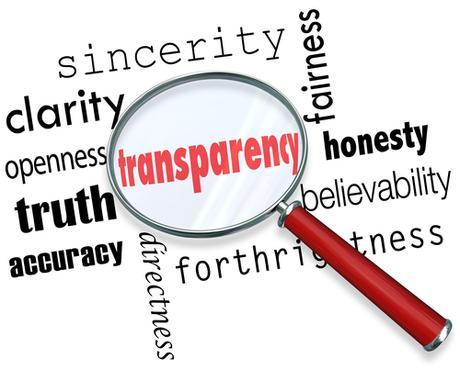
Brand transparency is directly related to industry trust, company loyalty and long-term revenue. As an integral part of relationship marketing, transparency is foundational to creating long-lasting consumer-business relationships. Yet most small businesses confuse transparency with authenticity and have misconceptions about the uses and parameters of positive brand transparency. Understanding how transparency works to develop consumer-business relationships is essential to developing a revenue-building marketing campaign.
Transparency Mitigates Conflict
Relationship marketing is a strategy that focuses on establishing, developing and maintaining successful personal interactions. Sales are not the primary emphasis but an associated outcome of a healthy consumer-business relationship. Conflict minimization is the most important factor in relationship development, and transparency is the best way to reduce conflict. When customers feel that they are well aware of the ins and outs of a company's policies and procedures, they are less likely to perceive conflict, even if they do not like the outcome.
Most large companies have their corporate docs available on their websites, but smaller companies tend to forget this step. At the very least, make sure your mission statement and executive bios are available for everyone to see. If you can make other information available without giving away proprietary company material, do so.
eWoM Still Has Eyes
In the days before digital media, much of marketing was done by word-of-mouth (WoM). Salespeople traveled from home to home, soliciting purchases and asking for leads. There was something about looking a person in the eye that helped to develop a relationship. A handshake was more important than today's online consent form.
Consider social media a digital version of WoM marketing. As such, it relies heavily on trust. The BrightLocal Local Consumer Review Survey found that 88 percent of people trust online reviews written by other consumers as much as they trust recommendations from their friends and family. In other words, get people to post reviews, because readers will listen.
Keep a Clean Kitchen (Metaphorically)
One of the simplest ways that a restaurant can be transparent about its brand is to have an open-view kitchen. When customers can see the chef prepare the food, it lends credence to safety and expertise. This same concept can be used in most any industry. Ketel One Vodka opens their distillery to viewers on YouTube. Ben & Jerry's gives daily tours through their factory in Vermont. Through whichever medium you think appropriate, give the consumer a glimpse into the workings of your organization, being certain to make them feel that they have gotten to see what happens behind the curtain.
Transparency and Authenticity Differ
The technology industry is one of the most trusted in the world, whereas pharmaceuticals is one of the least, according to the 2015 Edelman Trust Barometer. Yet the pharmaceutical industry is highly transparent, owing to both marketing and regulatory pressures. With big pharma, the impression is that their results are not authentic even if their reporting is readily available to the public.
Transparency is procedural. Authenticity is emotional. The Security and Exchange Commission can force a company to be transparent but not to be authentic. To be authentic, the company must reach the consumer on an emotional level, showing that it is caring and compassionate. This combination of transparency and authenticity is what relationship marketing theory tells us will create lasting, loyal customers.
